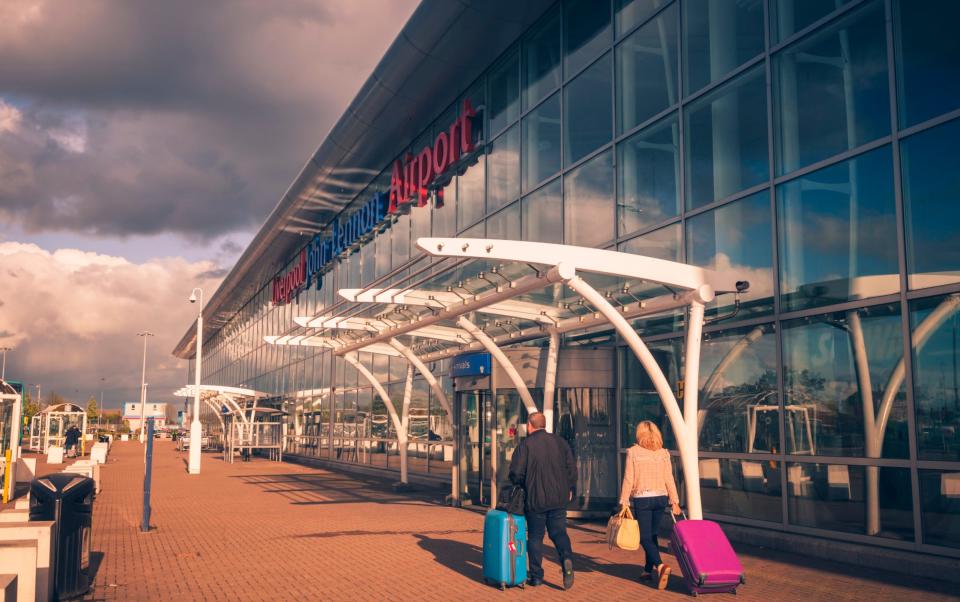The fall and rise of our regional airports

Queues at passport control, long waits for luggage, and overcrowded airport lounges. The UK’s largest terminals – Gatwick, Heathrow, Manchester – might have the most routes, but their size can lead to a whole host of problems. Enter regional airports. These overlooked bases might not immediately spring to mind when booking a holiday, but they have, quietly, been revolutionising the way we travel. And now the major operators are taking note. Ryanair will begin offering flights from Norwich airport for the first time ever next year, flying to Alicante, Faro and Malta on Mondays and Fridays.
Wartime origins
There are, technically, 50 UK airports that are considered “regional”, as the term refers to any airport outside of London with passenger services. Their remarkable rise largely began during the Second World War. Most – like Speke (now Liverpool John Lennon), Horsham St Faith (now Norwich), St Mawgan (Cornwall Newquay) and Eastleigh Airfield (Southampton) – were RAF bases, used during the war as bomber stations and, in the case of Speke, a “shadow factory” for manufacturing.

Many of these air bases were transferred to local councils or fell into government control in the late 1940s, restructuring to serve a commercial market. From Norwich, passengers flew to Amsterdam; from Plymouth, to Chambéry. Bournemouth was, remarkably, ‘London’s airport’ for a time. In 1946, Pan Am began running flights from the terminus to New York, five days a week. The journey took nearly 18 hours.
In fact, that model of using dubiously-located ‘city’ airports is regularly used in Europe today. Ryanair’s Milan base, for example, is situated some 45 kilometres outside of the city, near Bergamo. The practice allows airports to side-step the perils of being in a major city – namely disrupting residents and an inability to grow – and reduces costs. But in the UK, Bournemouth never really managed to compete with London’s offering, and smaller airports fell out of fashion in the latter part of the twentieth century.
Introduction of low-cost routes
The limiting factor for regional airports, of course, is the number of flight routes. Heathrow currently offers 214 destinations across 84 countries, which the smaller airports are unable to compete with. The early 2000s, however, offered an opportunity in the shape of low cost airlines. At Bournemouth, route numbers increased from 14 to 18 in 2009, taking passengers to destinations like Malaga in Spain and Faro in Portugal on budget providers. There was optimism about Bmibaby operating out of the airport and Flybe briefly started services. That initial flurry of interest, however, was cut short by the financial crash – airlines folded, and the business of running an airport was increasingly precarious. By 2011, Air Southwest had pulled out of flying from Plymouth, and the popular airport folded.
Yet despite dwindling passenger numbers, most regional airports survived. In 2011, Bournemouth served 613,755 passengers. As at most smaller airports, numbers remained steady, although some – like Blackpool, which closed in 2014 – never recovered. It was the pandemic that became the most significant threat, however. As Flybe folded and passengers dried up, the future of terminals like East Midlands, Birmingham and Belfast City were plunged into doubt. Doncaster-Sheffield, which had served 1.25 million passengers in 2016, closed at the end of 2022, citing the airline’s collapse as a key factor.
“There have always been challenges,” says Andrew Boomer, Director of Operations at Newquay airport. “You had the Gulf War, and then Foot and Mouth, which ravaged the region. All of these things came to try us, but I think that the pandemic was a big, big blow.”
Post-pandemic optimism
That trend, however, began to change. The closure of Doncaster-Sheffield helped nearby Leeds Bradford, where Wizz Air and TUI transferred its flights. Last year, passengers in August at Exeter airport exceeded 50,000 for the first time since before the pandemic – despite Flybe having accounted for 80 per cent of its business. And at Newquay, 21 routes are now in operation.
“Regions are proud of their airports,” says Andrew Bell, the CEO of the Regional and City Airports Group, which operates Bournemouth, Norwich, Exeter and Coventry.
“You tend to see that most vocally and most publicly when one of them’s at risk,” he continued. “It’s like a much bigger version of the village pub, or the post office. If you’ve got one, you want to make sure you keep one because they’re not building any more.”
In fact, global events were a major turning point for Newqay. The G7 Summit in 2021 was hosted in Carbis Bay, with world leaders landing at the airport before the conference. Air Force One was photographed on the runway and Andrew Boomer noted that it “put them on the map.”
The competition from major airports seems to be a welcome challenge, too. The most dramatic moments of travel chaos this summer affected all airports equally, but other factors, like train strikes, meant that those with cars had a bit more flexibilty.
An alternative to large airports
“The USP of a regional airport is that it offers people the opportunity to travel in a far more straightforward way,” says Andrew Bell. “If you live locally, you can travel to a whole range of destinations with a far shorter and more comfortable journey than through a bigger airport.
“Just by definition, all of the processes and the sheer size of the bigger airport make that whole experience more difficult and time-consuming. So it offers people quite a compelling option – we’ll be able to care for them in a much more personal way than a much bigger airport would.”
Then there’s domestic flights, which have offered a more flexible option in a year that has been marked by rail strikes. The much-derided Air Passenger Duty was also cut earlier this year, making internal air journeys cheaper. As rail fares increase, the number of people interested in flying domestically is likely to increase. For the south west, this might mean flying from Newquay to Gatwick – there are three flights a day – but domestic flights are also looking to change the way people transfer to larger airports that offer more routes. So rather than travelling to London or Manchester by car or train for an onward international flight, Newquay is positioning itself as a ‘gateway’ to other destinations, through connecting flights to the two major cities.

Both representatives were keen to point out to Telegraph Travel that sustainability is a key concern. Andrew Bell said that the airports do have a responsibility to consider the environment, while Andrew Boomer pointed to developments in sustainable aviation fuel as a potential solution. Both also emphasised that their airports aren’t solely concerned with transporting holidaymakers. Their ancillary functions, they argue, are extremely vast, with the amount of people they employ crucial to the local economy. At Bournemouth, around 300 staff are employed at the airport, with 4,000 more working at businesses on the campus site.
“It’s a magnet for economic activity,” says Andrew Bell. “Regional airports have the space and flexibility to offer themselves as a place to innovate.” Training pilots and ground staff, developing aircraft design, and performing maintenance on aeroplanes; it all takes place at the UK’s smaller airports.
It is, admittedly, early days. The lingering effects of the pandemic mean the resurgence of passengers has to be treated cautiously. Yet the airports are optimistic, promising improved facilities, quicker services and expanded routes. And the local demand seems to be there – campaigns in Plymouth and at Doncaster Sheffield might eventually lead to them reopening. So it may be that we are on the cusp of a resurgence of the regional airport.
“The use of these airports has adapted and flowed as the market, and fashion, and airlines have changed,” says Andrew Bell. “But they endure.”

 Yahoo Finance
Yahoo Finance 